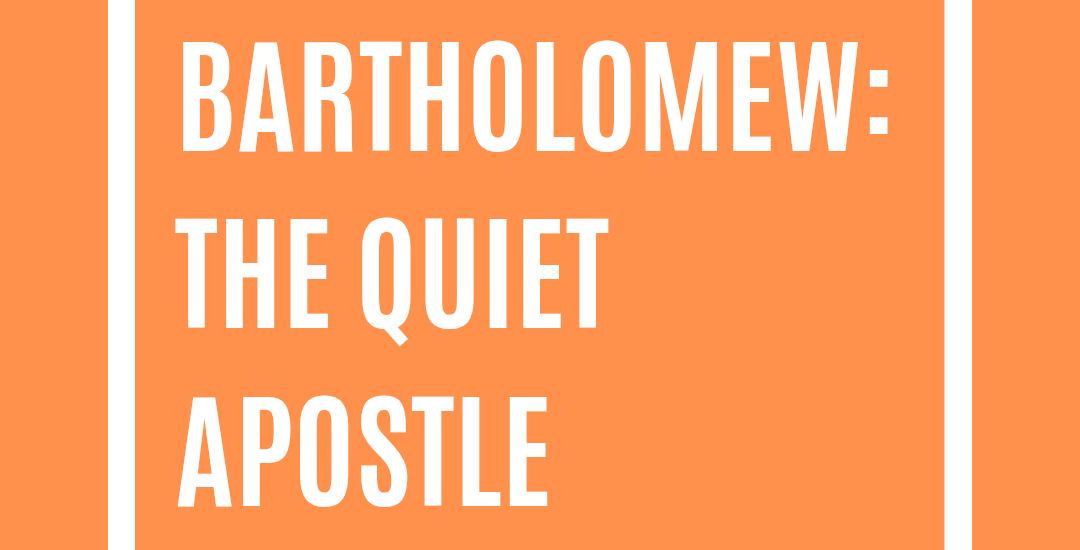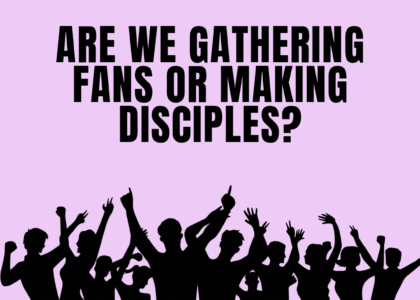Can you follow Jesus without ever being in the spotlight?
We live in a culture that rewards the loudest voice, the biggest stage, and the boldest profile. But the kingdom of God often highlights something entirely different. It celebrates faithfulness over fame and depth over display. That’s where Bartholomew the Apostle comes in.
He’s not flashy. He doesn’t have memorable one-liners like Peter. He doesn’t write letters like John. You could read the Gospels and miss his name completely—unless you’re paying attention. But heaven remembers.
Bartholomew, also known as Nathanael (John 1:45–51), is one of the twelve disciples chosen by Jesus. Though he doesn’t dominate the narrative, his legacy stretches further than many realise.
His First Encounter: Honest Doubt, Sincere Faith
The Gospel of John tells us that Philip found Nathanael and told him they had found the Messiah—Jesus of Nazareth. Nathanael responded:
“Can anything good come out of Nazareth?” (John 1:46, NKJV)
It wasn’t sarcasm. It was skepticism grounded in Scripture. Nathanael knew the Messiah was prophesied to come from Bethlehem, not Nazareth. But here’s the beauty—he still came to see.
And Jesus met him with words that still echo through time: “Behold, an Israelite indeed, in whom is no deceit!” (John 1:47, NKJV)
Bartholomew (Nathanael) was honest, sincere, and unpretentious. Jesus saw past his doubt and honored his heart. That encounter changed everything. He declared: “Rabbi, You are the Son of God! You are the King of Israel!” (John 1:49, NKJV)
That’s the thing about Bartholomew—he might start in doubt, but he ends in declaration.
History Picks Up Where the Bible Falls Silent:
Scripture doesn’t give us much more about Bartholomew after the Gospel accounts. But church history speaks:
Eusebius, a 4th-century church historian, wrote that Pantaenus of Alexandria discovered a Hebrew copy of the Gospel of Matthew in India, believed to have been left by Bartholomew.
This suggests he traveled far—likely to Southern Arabia, India, and possibly Armenia.
The Armenian Church reveres Bartholomew as one of its founders, along with Thaddeus (Jude).
Tradition tells us he was martyred in Armenia, possibly flayed alive and crucified upside down, after converting King Polymius of Armenia to Christianity.
If true, it means this quiet disciple preached the Gospel thousands of miles from home and paid for it with his life.
Portrait in Christian Art: Holding His Skin
In many Renaissance paintings, Bartholomew is portrayed holding a knife and his own flayed skin—a haunting reminder of his gruesome death. Yet what’s more powerful is that even in death, he became a symbol of courage, perseverance, and unwavering faith.
His bones, according to Catholic tradition, now rest in St. Bartholomew-on-the-Tiber Church in Rome. Parts of his relics are said to be in Frankfurt, Canterbury, and other locations.
What does Bartholomew teach us?
1. God uses those who are unseen by the crowd but known by Christ.
While others courted the limelight, Bartholomew simply followed. And that was enough.
2. True worship starts with honesty.
“Can anything good come out of Nazareth?” wasn’t disrespect—it was a real question. And Jesus loved the integrity behind it.
3. Some of the greatest kingdom work happens in the background.
Bartholomew may not have preached to thousands like Peter, but he may have planted the Gospel in entire regions where no apostle dared to go.
4. Faithfulness beats fame.
Heaven keeps better records than men. In God’s eyes, Bartholomew was no footnote—he was a cornerstone of the early Church.
A Quiet Hero for a Noisy Generation:
We need Bartholomew today.
In a world obsessed with “platforms” and “followers,” Bartholomew shows us the power of presence, depth, and authenticity.
In a generation chasing speed, he reminds us that sometimes the most powerful journeys are the long, quiet ones.
As A.W. Tozer once said: “The man who comes to a right belief about God is relieved of ten thousand temporal problems.”
Bartholomew had that kind of belief. A belief that sent him across deserts and seas. A belief that made him courageous before kings. A belief that let him suffer for Christ, and still rejoice.
A True Story: When Nobody Was Looking
I once heard of a missionary who served in a remote part of Asia for over 30 years. No spotlight. No Instagram. No book deals. Just a worn-out Bible, calloused knees, and a heart for Jesus. When he passed away, the village wept—not because of what he said, but because of how he lived.
That man was a modern-day Bartholomew.
Sometimes, the real giants of faith don’t stand tall on stages… they kneel daily in secret prayer.
Reflection:
1. Do I serve only when I’m seen, or am I faithful when nobody is looking?
2. What “Nazareth” moments am I resisting—areas where I’ve dismissed God’s move because of how it looks?
3. Am I willing to walk the long road of obedience, even if it costs me everything?





